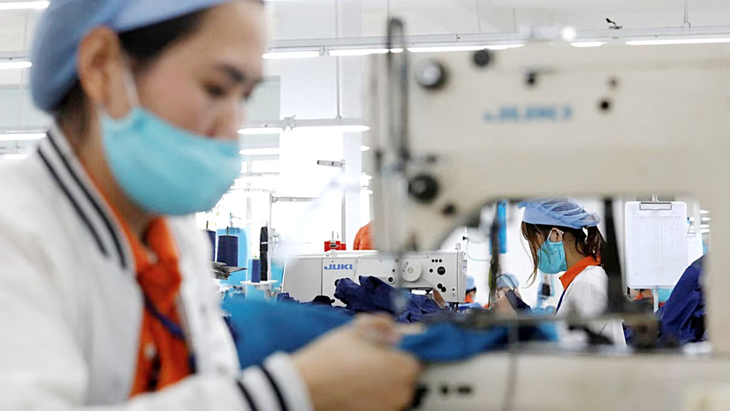Canada is a potential market for Vietnam’s textile and garment exports thanks to the Comprehensive and Progressive Agreement for Trans-Pacific Partnership (CPTPP), said Dang Thai Thien, deputy head of the Supervision and Management Division under the Ho Chi Minh City Customs Department.
Canada eliminated a majority of import duties for Vietnamese textile and garment products as soon as the CPTPP came into force between them in 2019 and will remove all the tariff lines this year.
The CPTPP is a free trade deal among Australia, Brunei, Canada, Chile, Japan, Malaysia, Mexico, New Zealand, Peru, Singapore, and Vietnam.
It came into effect on December 30, 2018 in the first six countries: Canada, Australia, Japan, Mexico, New Zealand, and Singapore. The accord entered into force between Canada and Vietnam on January 14, 2019, and on September 19, 2021 for Peru.
After four years, Vietnamese enterprises still have room to take advantage of the agreement and expand markets, especially new ones such as Canada.
According to the General Department of Vietnam Customs, textiles and garments accounted for the largest proportion of Vietnam’s exports to Canada last year.
In particular, Vietnam exported US$1.3 billion worth of apparel products to the North American country in 2022, surging 40.3 percent over 2021 and accounting for 20.7 percent of Vietnam’s total export value in Canada.
The Vietnam Textile and Apparel Association late last year estimated Vietnam’s textile and garment export value at $44-44.5 billion in 2022, meaning that the Canadian market made up a small proportion of Vietnam’s exports.
At a seminar on the CPTPP in mid-February, Thien said Vietnam’s exports constitute nearly two percent of Canada’s imports. Thus, the potential to ship products to this market is huge.
However, opportunities are not available forever, Thien stressed, urging Vietnamese enterprises to quickly grasp those ushered in by the free trade accord.
He added that Canada is negotiating with other ASEAN countries for their free trade agreements.
Canada takes initiative in seeking Vietnamese partners
Pham Quang Anh, CEO of Dony Garment Company, told Tuoi Tre (Youth) newspaper that enterprises pay great attention to pricing.
“Enterprises need free trade agreements to win big contracts,” Anh said.
However, to meet origin requirements as stated in the CPTPP, some Vietnamese textile and garment enterprises like Dony have to change input materials, which may cause them to lose competition advantages to rivals, especially China.
Anh has recently learned about the CPTPP after many Canadian customers contacted him.
“I felt strange at first as my company had no such customers earlier. However, I later found that they contacted me due to special incentives in the CPTPP,” Anh said.
According to statistics from the Canadian government, its exports to other members of the CPTPP rose 22 percent in 2021-22.
Pirkko Penttila, Canada's regional coordinator for CPTPP issues, said ASEAN is a core market of Canada’s Indo-Pacific Strategy.
“Canada has inked FTAs [free trade agreements] with some members of the CPTPP, such as Mexico, Chile, and Peru.
“However, the CPTPP also includes newly-emerging parties that change the situation, such as Vietnam,” Penttila noted.
According to the coordinator, the trade deal helps facilitate the access to preferential markets of Asia-Pacific countries.
Vietnam often considers the deal as the removal of tariff lines, but it is more than that.
“The CPTPP features all sectors and aspects of trade to eliminate obstacles to trade activities, creating a fair, transparent, and consistent environment for parties,” Penttila added.
She affirmed that Canada attaches great importance to its ties with Vietnam, its largest trade partner in Southeast Asia.
Boosting the trade relations between the two countries is more meaningful as they will celebrate the 50th anniversary of their diplomatic relations this year.
Like us on Facebook or follow us on Twitter to get the latest news about Vietnam!




















































